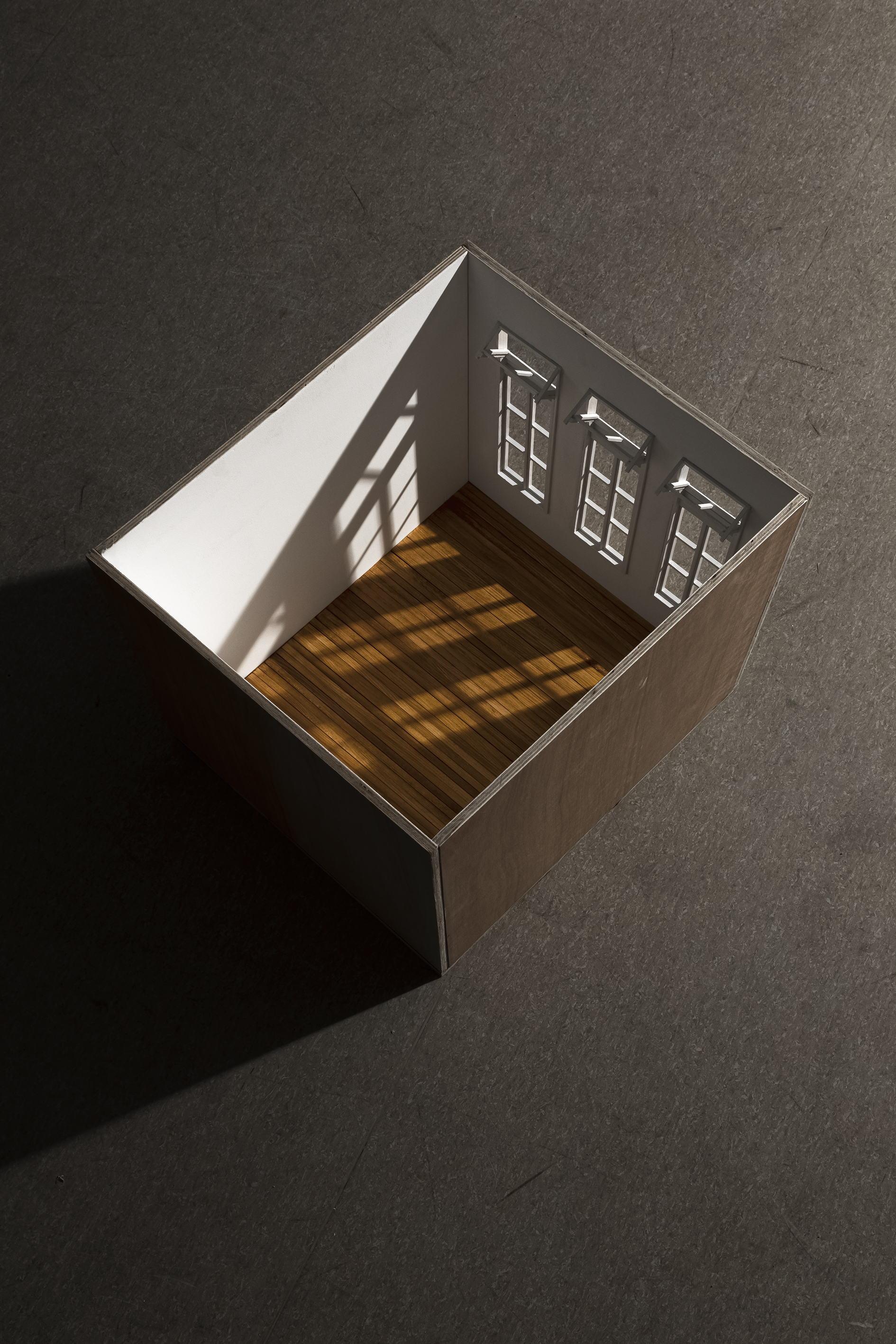ROOM WITH WINDOWS | BART LUNENBURG
A small room with no entrances or exits, a sharp light and no furniture. Despite the austerity, this image attracts the attention by abstracting the space and reducing it to its functionality. Could it be a doll’s room? The model for a new room to be built? A sculpture or an installation? Room with windows (2020) is all these things: artist Bart Lunenburg’s project is an open research on architecture and its change in recent years following the pandemic emergencies. At the same time, the images born from this project live independently, in a sort of suspension, which if on the one hand reduces to the essential, showing the simple architectural structure, on the other it expands the boundaries of the image, to open up to a disorienting, almost dreamlike vision. The window is the chosen object for daydreaming, the threshold on which we pause to reflect, but at the same time it is also a tool for defining space and which in certain historical circumstances can turn into a limit.
In Bart Luneneberg’s image, this room becomes small, just a model, but somehow places our attention on the windows, the element which define the dialogue between outside and inside. The structure introduces these reflections, also linked to the gaze: the window establishes a dialogue between inside and outside, thinking back to the lockdown it becomes clear that the window was the only possibility to have contact with the outside world. The work starts from this social consequences of the pandemic and how the need to cope with these conditions of limitation has radically changed the methods of use and organization of spaces, especially public ones such as schools or offices. The obsessive need to sanitize spaces and ensure use with a correct exchange of air has led to a real design rethinking of the window object/tool. Furthermore, the window has become a central element that could radically change the perception of one’s daily life: forced to stay at home who could benefit from a greater ambient light or a large window, would defenitly have a different perception of the space and the time in which was obligatory to stay home. The window becomes that object that is charged with thoughts, visions and contact with the external dimension, its shape was definitely changing the experience of the lockdown. Lunenburg revolves around these values in order to propose research that is able to include both its engineering functions and its more personal and human dimension.
Room with windows is the expression on several linguistic levels of a research that seeks to delve into the consequences of a historical event: what may seem like a banal detail, the rethinking of the windows, is one more piece to the mosaic of changes that have affected our life in both public and private aspects. Furthermore, the project sheds light on the adaptation of architecture over the ages to the needs of men and therefore inevitably how it can be influenced by external factors, such as medical or health factors that we have recently addressed.
How do we experience a space in relation to its structure? What sensitivity do we have for changes, even the smallest ones, of a place we live in every day? And to what extent do the objects of our daily life become factors that also determine our mood or predisposition? These are some of the questions analyzed by Bart Lunenberg who tries to relate design and architecture with man and his physical needs. Our definition of space, in the sense of community and society, also depends on our physical conditions: three simple windows in a rigid row can become elements of great significance, not only structural but of existence and lived experience. The ability to look outside, to let the light reflect on the walls are factors that make it possible to face even moments in which one’s home becomes the only permitted living space.
Bart Lunenburg
The Healer #02
from the installation Room with Windows, 1888-2020
courtesy of the artist
18/05/2022

